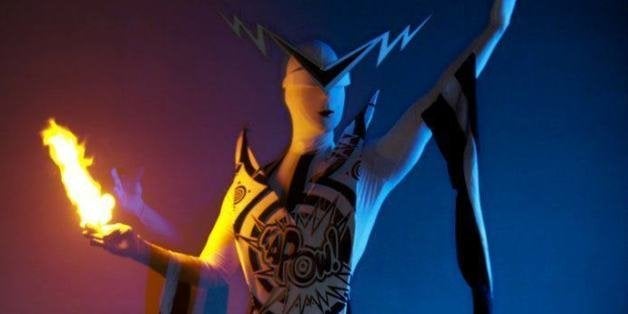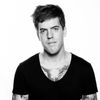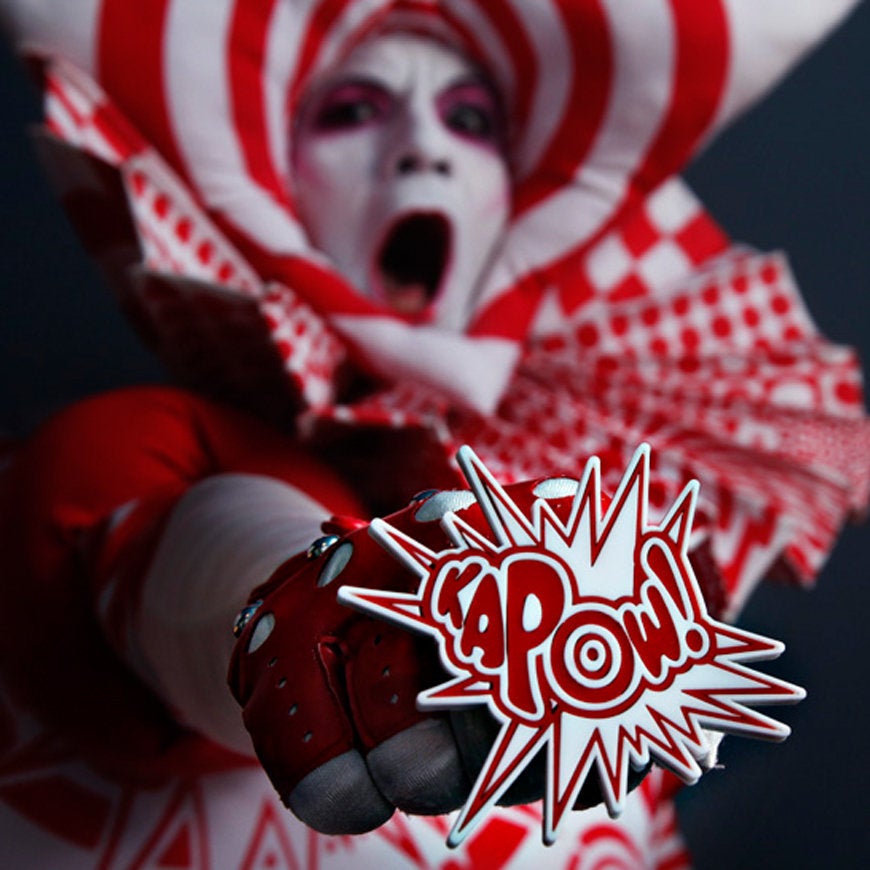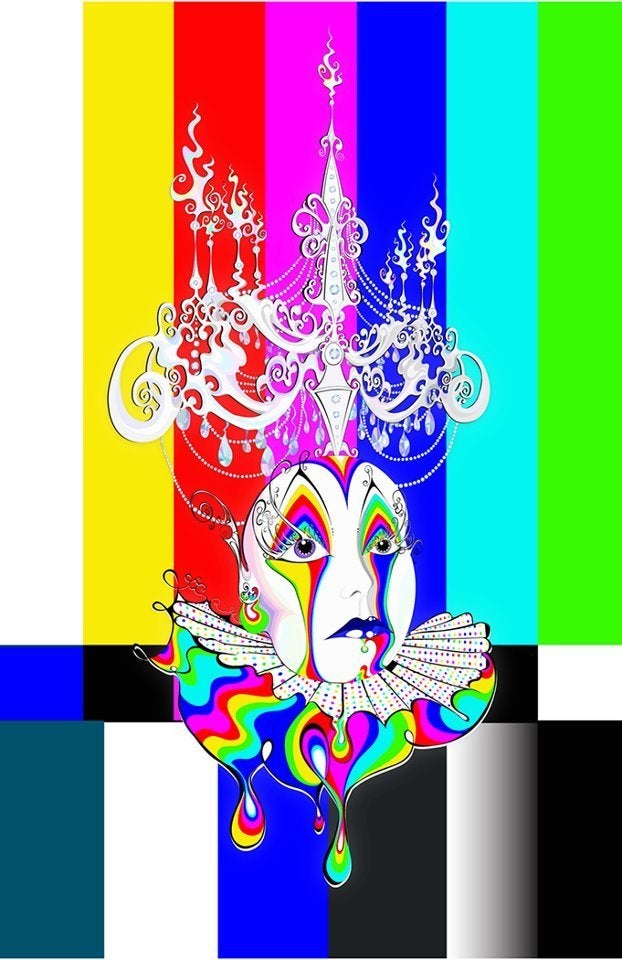
This is the fourth installment in HuffPost Gay Voices Associate Editor JamesMichael Nichols' 30-part series "After Dark: NYC Nightlife Today And Days Past" that examines the state of New York nightlife in the modern day, as well as the development and production of nightlife over the past several decades. Each featured individual in this series currently serves as a prominent person in the New York nightlife community or has made important contributions in the past that have sustained long-lasting impacts.
HuffPost Gay Voices believes that it is important and valuable to elevate the work, both today and in the past, of those engaged in the New York nightlife community, especially in an age where queer history seems to be increasingly forgotten. Nightlife not only creates spaces for queers and other marginalized groups to be artistically and authentically celebrated, but the work of those involved in nightlife creates and shapes the future of our culture as a whole. Visit Gay Voices regularly to learn not only about individuals currently making an impact in nightlife, but those whose legacy has previously contributed to the ways we understand queerness, art, identity and human experience today.
The Huffington Post: What did your journey to becoming a fixture in the New York nightlife scene entail? How did you come to embody Muffinhead as a persona?
Muffinhead: It was all a complete accident. I'm basically an artist with a thing for abstraction and total exaggeration which, in some way, places me creatively in the nightlife bullseye.
I started out going to parties like Club Makeup and Cherry in L.A., which were a riot in the early 2000's. My first night out I did ecstasy, saw an Oscar Wilde on stilts, got fondled on a dancefloor by hot strangers -- and realized that this was where I had to be.
Around the same time I started showing work in underground street art shows like "Cannibal Flower" and naturally brought my bizarro fashion sense along for the ride. For me it was all something of a silly pastime to gather attention for my artwork. I would work on a painting for a month and than maybe work on an outfit piece for two or three days and people would almost ignore the artwork entirely in favor of taking pictures with me in a showgirl headpiece and a suit made from aluminum foil -- which was as shocking to me then as it is now.
So, I'm a product of both environments, really. Upon moving to New York my ex-wife/burlesque star Amber Ray introduced me to Susanne Bartsch and Kenny Kenny at their Happy Valley party, as well as Shane Savant at Webster Hall, and they have all supported me since. The rest is persistence. I have too many ideas rolling around upstairs and it all still feels so puckish.
There's something so perfectly devilish about pulling these concepts off. It feels like it should be illegal -- and I love that.
What kind of work do you tend to produce? Where do you find inspiration for your looks?
It's all a bit abnormal. Much like taking a piece of taffy and stretching it as far and in the most absurd, unexpected directions possible... that's my aesthetic.
Personally, I'm inspired by everything I see: a design on a packet of sugar, ornamental ironwork, people on the subway… I get a big Leigh Bowery reference poked at me by a lot of people, which is okay with me but I actually hadn't even heard of Leigh when I was in L.A. -- I did not have the New York/London Club Kid lexicon to influence me at all. My design influences go straight to Dali, Gustav Klimt and Aubrey Beardsley. My KaPOW! look actually came about because I was terribly depressed. My life had exploded and I was going through a divorce so I guess you could say, much like any artist, my toolbox consists simply of thoughts and feelings.
What is your creative process when it comes to conceptualizing and producing a piece of work or a look?
Well, if it's an idea that will drag me out of bed in the morning than that's the one for me. It's got to have that frantic thunderbolt quality to it or else I just can't be bothered... and that's the first step.
From the initial thought bubble I'll go on to sketch it out, take the design into Photoshop or Illustrator, adjust the dimensions, create and drop patterns into place and develop a color scheme. If it's a painting or a sculpted plexiglass piece I'll just keep going from there, and if it's an outfit piece I'll work with my longtime collaborator Hector Perez from AlieNation or with Garo Sparo until completion. I also work with Max Steiner on all laser-cut work.
How have psychedelics influenced the work that you produce?
Largely. My first experience with art was studying Jim Morrison so I was doomed from the start in that regard. I was brought up in a very religious household and I wanted to take a flamethrower to everything that I felt was holding me back. Psychedelics were a helpful one-way ticket. To tell you the truth, I'm not sure how necessary it was as I've always had too many visions to keep track of. I think if you have an awakened third eye than hallucinogenics will only take you so far. That being said, I think it's important to realize one's own personal space -- sort of like an astronaut, but not an aimless one. I've been fortunate enough to have my work colored by those experiences, but am hesitant to fully recommend it.
What purpose do you think nightlife serves in allowing queers and other marginalized groups to be creative and celebrated within safe, supportive spaces? Why is this important?
From a cultural standpoint that is its purpose exactly. Nightlife is a human art gallery for all types -- and, if not, it should be. It's important because without it we are a 9-to-5 planet that will turn grey and die without our fantasies and dreams to sustain us.
Even with its pomp and occasional pretension, there is something so sweet about seeing a CEO and a queen on the same dancefloor. In the grand scheme of things it can awaken a real and hopeful sense of community.
How do you see what is happening now in New York nightlife as building on a historical legacy of artists, performers, musicians and personalities over the past decades?
I think that at our best we continue to build the bridges. I also think there is failure in formula. It's easy to rely on your basic bar and go-go schematics and it can also get terribly boring if no one is pushing the boundaries.
We will only really be honoring the legacy of those before us by creating something new.
We have less limitation to deal with in this field than most and I feel that will remain our advantage unless we decide not to utilize it.
How have you seen technology augment and mold nightlife during your time in the scene? Do you think this is necessarily good or bad?
I was just thinking about this while listening to Depeche Mode last night thinking, "Wow, it sounds so much slower than dance music nowadays." Because of the Internet our pace in life is so much faster and music reflects that -- which I'm not sure is a good or a bad thing. We're all fed by the same vanilla wave of information, which makes me nervous because it has a flattening effect and dries out a lot of our dissidence and subculture.
In the future I think we'll have found a way to balance out the massive overload of information and communication by simply minimizing our time online, much like we've been able to do with television.
You've talked before about how art, fashion and nightlife make comfortable bedfellows -- do you think artists engaged in nightlife find it easy to tease their identities as artists and nightlife personalities apart from one another?
I think any artist will find a way to make their art, whether it's directly in the nightlife idiom or beyond it. If there is any sort of push to fuse art and nightlife it's out of necessity for clubland. The heavy pop art/surrealist aesthetic we have lends itself to concepts that are quickly outgrowing nightlife; plus it's really not fun to have someone spill their drink on a piece that you've just spent weeks working on… a lot of it is work that can and should have a light hitting it.
Art galleries can be very cold and sterile, which is challenging because it almost immediately makes a performance awkward. Nightclubs are alcohol and drugs in the bathroom stall… both could benefit from a slice of the other.
What is the most important thing you see coming out of the way nightlife has shifted and developed into what it is today?
For me it's always about the art and the artists. I think we're breaking more and more into building worlds that people can literally and figuratively escape to with our art. Along with things like Burning Man you see an unmistakeable evolution in concept, style and design. These things all represent an important shift in consciousness.
The worlds and the outfits and the scenes we create are primarily elaborate escape routes from a reality that we didn't create and most of us want less and less to deal with... so in time we build our own reality. In this type of expression there is also a subconscious push for truth and evolution. A lot of times it's hard to deduce men from women in a nightclub. And that's a wonderful thing because we are heading into a time in which we'll depart further from gender roles, which also gives way to compassion and acceptance. It's a microcosm that I'm happy to be part of.
During his feature earlier in this series, Michael Alig made this statement: "It seems like nightlife hasn’t really evolved in the past 15 years. I have a whole theory about that. My theory is that we are witnessing the end of our Western cultural dominance in the world and that we’ve gone as far as we can with our Western lifestyle as far as decadence, fashion, style, stuff like that. We’ve done every kind of fashion imaginable from miniskirts to maxi skirts, from peg leg pants to bell-bottoms, from black lipstick to glossy lipstick -- everywhere in-between. The only things we can do right now are kind of different variations of the same model and we’ve even done that already." -- How do you respond to this? Do you agree with him?
No, I completely disagree. If I agreed with that statement I would have to try not to throw myself off a building somewhere because it suggests that the work we've been doing is a shadow dominated by the past and is ultimately meaningless. It closes a lid on a lot of artists whose work is still in progress. In my opinion, it's impossible to look at the work of Darrell Thorne or Ryan Burke and say that it lacks the elegance of nightlife past. It's impossible to look at any Narcissister performance piece and say that it lacks originality.
When you take into consideration the enormous potential visuals that exist as far as technologically infused fashion is concerned, and as far as wearable art is concerned, we've only just begun.
The variations upon variations he was referring to can actually make for a kaleidoscope of practically endless possibility.
What projects are you currently working on?
Currently I'm very hard at work on a group show that I'm quite privileged to be a part of, curated by Susanne Bartsch for The Chelsea Hotel Gallery Storefront on June 26.
The work itself is coming from a really sad place with me, personally, but it's been so enjoyable to create work that I feel has elements of both fashion and truth.
Outside of that, I'm still desperately trying to wrap my brain around a 3D modeling program. I keep getting sidetracked but eventually it will happen… and I'm designing a large furball monster outfit for this year's chashama gala that will incorporate myself and a little person performer sitting on my shoulders for a few hours -- and an excellent workout on my part. I'm so excited to finally transform myself into a two-headed, four-armed monster!
I'm pretty sure my mother will be very proud.
For more from Muffinhead head here to visit the artist's website. Missed the previous installments in this series? Check out the slideshow below.


